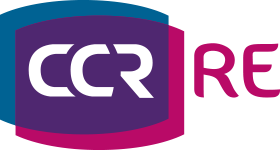Last appointment with reinsurance tutorials, episode #17 - Season 3
Hi everybody 👋
Today, and for the 17th and final Reinsurance Tutorials video of the season, we will talk about the "AI for reinsurance contracts: eProcesing underwriting use case"
This final subject will be addressed by CCR Re experts Madeline Jauvat and Akli Kais.
Let’s start! ⏬
[Akli Kais]: Hello and welcome to this video on AI in reinsurance.
[Madeline Jauvat]: Hello. I'm Madeline Jauvat, Reinsurance Legal Advisor at CCR Re.
[Akli] : In this tutorial, we will be talking about the behind the scenes of the underwriting workflow in reinsurance and how AI can improve underwriting assistant routine.
We will also dive deep into how CCR Re implemented a document eProcessing tool, an AI-based assistant for entering contractual data from reinsurance treaties into our digital systems.
[Madeline] : In the reinsurance industry, entering contractual data from reinsurance treaties into a system refers to the process of capturing and recording valuable information contained in reinsurance contracts into a digital system. This information includes details such as policy limits, deductibles, premiums, coverage terms and conditions, and other relevant data.
The process involves analyzing the entire contract, identifying the key data points, and inputting them into a digital system in a structured and organized manner. Accurate and comprehensive data entry is essential for ensuring that reinsurance policies are properly priced, managed, and evaluated for risk. This can be a time-consuming and complex process, particularly for large and complex policies.
In this regard, with the collaboration of the digital factory team, we developed an AI-based assistant that can streamline and automate document processing, making the underwriting workflow more efficient and accurate.
[Akli] : To develop the document eProcessing tool, we followed five steps:
- Identify the documents: The first step consists of identifying the type of documents that need to be processed. This includes policy documents, claims forms, contracts, perimeters, and other legal documents.
- Use Optical Character Recognition (OCR) software: Once the documents are digitized, OCR software is used to read and extract text from the documents, such as PDFs and other formats.
- Train the AI models: NLP and Deep Learning algorithms are applied to analyze the content of the documents and identify patterns needed to accurately extract and classify the entities into the right labels.
- Integrate into existing systems: The processed data is then integrated into the underwriting and claims management software.
- Monitor and refine: Finally, it is important to monitor and refine the AI models over time. This involves continually providing new data to the models to improve their accuracy and to adjust the models as needed to handle new document types or changes in document formats.
[Madeline] : At the end, I need to mention that the eProcessing document presents several benefits.
- First, it can save time and reduce costs by automating a labor-intensive process.
- Second, it can improve accuracy by reducing the risk of errors and inconsistencies.
- Finally, it can improve the overall efficiency of the underwriting process by freeing up the underwriting assistant’s time to focus on more complex tasks.
[Akli] : Thanks a lot for watching this video, now AI in reinsurance contracts has no secret for you.
[Madeline] : Thanks a lot and goodbye.
See you soon for a new season 👋
📺 More episodes are coming... Subscribe now to receive them by email! 📥


